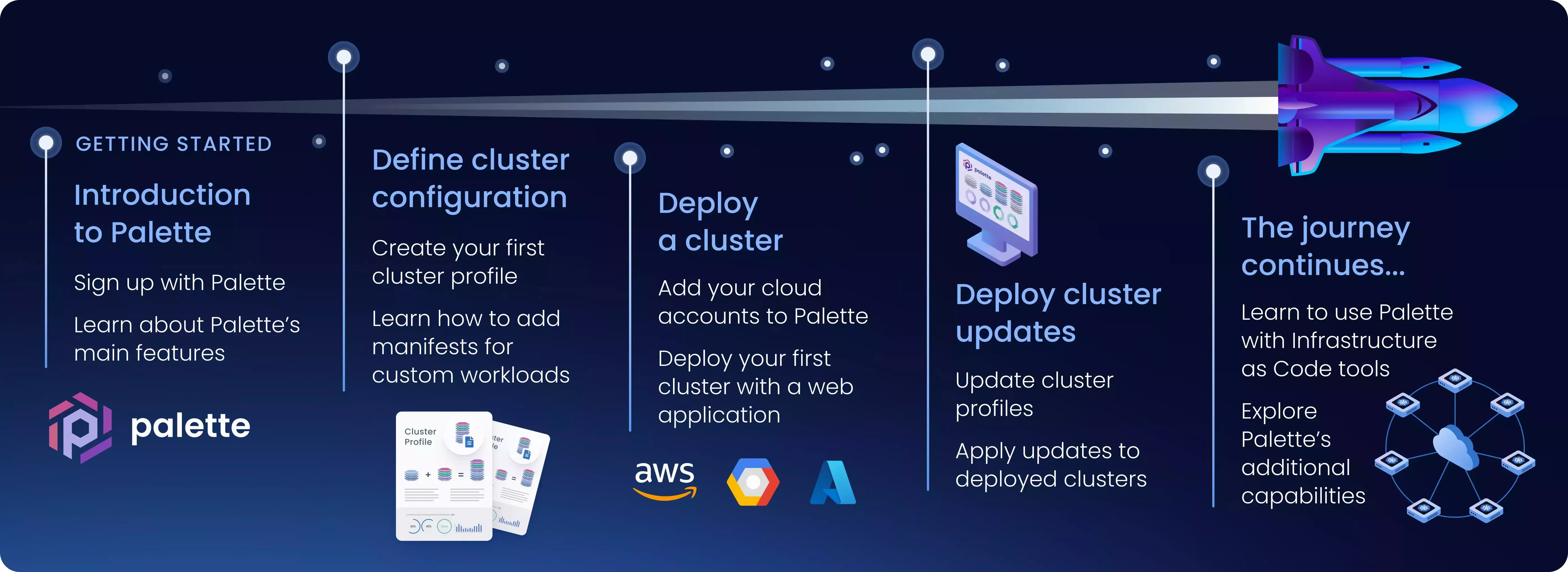Getting Started
This page gives you an overview of how to get started with Spectro Cloud Palette and begin leveraging its Kubernetes full-stack management at scale. Palette's unique capabilities provide end-to-end declarative cluster management, cluster monitoring and reconciliation, as well as enterprise-grade security.
Palette provides developers and platform engineers with complete control of their Kubernetes clusters. The platform provides support for public cloud providers, data centers, bare metal, and edge so that you can deploy and use Kubernetes no matter the complexity or location of your production environments. Check out the following short video for a quick overview of Palette's key functionalities.
Deploy Kubernetes Clusters with Palette
The first step towards adopting Palette in your organization is to create a login. The Palette Free Tier allows you to experience the benefits of Palette first-hand.
We have curated the pages in the Getting Started section to give you a gradual introduction to the fundamental concepts and workflows you need to deploy and manage Kubernetes clusters through Palette.

First, you will learn how to create cluster profiles, which are the blueprints for your Kubernetes stacks. Then, you will deploy your first cluster using your cluster profile. Once you have deployed your first cluster, you update it using Palette's cluster management functionality. The Getting Started section also includes other topics that you can explore further, such as cluster deployment with Terraform, Palette's edge capabilities, and virtual machine orchestration.
Explore more through the following pages.
Learn about what makes Palette different.
Tour the Palette Project and Tenant Admin dashboards.
Learn about Palette Cluster Profiles and Packs.
Create a full cluster profile in Palette.
Deploy a Palette host cluster in AWS, Azure or Google Cloud.
Update your deployed clusters using Palette Cluster Profiles.
Deploy a Palette host cluster with Terraform.
Learn about Palette's additional capabilities.